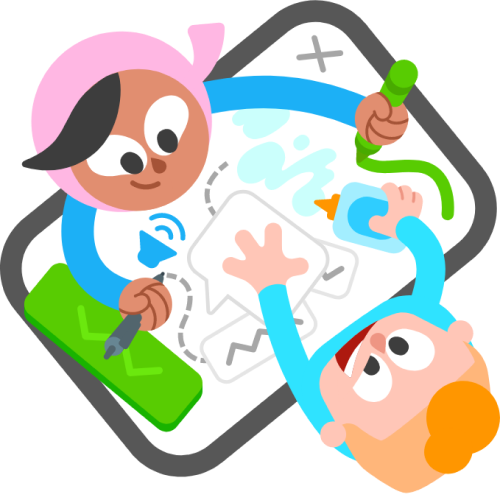After two years teaching through a pandemic, students and educators are faced with more challenges now than ever before. Many students are struggling to cope with feelings of depression brought on by lack of socialization, while teachers are faced with executing lesson plans and helping students learn to process their emotions while keeping up with their classwork. How do teachers manage both?
Social and emotional learning (SEL) is how students acquire the skills needed to make responsible decisions, manage their emotions, and achieve goals. The classroom is the perfect place to develop these skills! Teachers might prepare lessons that help students explore executive functioning skills, like adaptable thinking and self-awareness. To create a safe, positive learning space and help your students develop enhanced social-emotional skills, try implementing these SEL activities in your language classroom:

Check in daily
Check-ins allow you to give your students a space to relate as a community, and can be implemented in a variety of ways.
Try a quick morning meeting: gather your students into a circle to share the schedule for the day’s class and have a “whiparound,” where all students provide an answer to the same question.
Feel free to alternate serious and silly questions. (In the market for a silly question? Try asking them to invent a new name for a banana!) Additionally, consider offering students the opportunity to tie in to the content you are working on by sharing a new vocabulary word, or responding to the question in their target language. Encourage all students to answer, but allow them to politely skip if they do not feel comfortable answering in front of the class.
No matter how you choose to check in with your students, consistency is what matters. Commit to a structure that can be implemented daily and accomplished without significant disruption to learning time.
Many teachers opt for a time-friendly check-in sheet that students can complete while they settle in for class. For resources like this, along with other teacher-created materials, visit the Resources for Teachers section of the Duolingo for Schools Help Center.
Encourage goal-setting
Setting goals helps students self-motivate and feel good about their learning achievements and research shows that using goal-setting in the classroom has been proven to raise student achievement. Individual milestones are great, but you could also build accountability and trust in the classroom by setting some goals as a group!
Do you have a goal for your students to learn 300 words? Work with your students to set a goal for how many words they will learn a week! Consider check-in schedules to facilitate their journey while giving your students quick bursts of one-on-one attention.
Your Duolingo for Schools teacher dashboard can help with this! Ask your students to set a goal indicating the number of Lessons they plan to complete, or use XP assignments to help your students maintain consistent practice. Don’t forget to plan small ways to celebrate your students as they manage, achieve, and surpass their goals!
Prepare students in advance
Everybody, students included, likes to know what’s coming next—in the classroom, preparedness helps students feel safe and ready to put their best foot forward.
One option is to engage your students with repeat reading, where students read the same content multiple times, to promote fluency and understanding. This has been shown to increase students’ sense of safety within a classroom as well as their overall reading comprehension.
How can you implement this without having to plan your material months in advance? Try Stories! Assign a Story for students to read at home first. After they have had time to practice, bring it into your classroom for a lesson. You can translate the story together, assign students to create their own extensions of the story, or even act out skits with the stories as inspiration! Your students will feel safer and more likely to participate because they understand the material better.
Duolingo for Schools is invested in creating the best learning experience for students and teachers
Ready to engage? Begin by creating a (free!) Duolingo for Schools account. You can use this account to assign a variety of activities to your students and monitor their progress as they learn.



